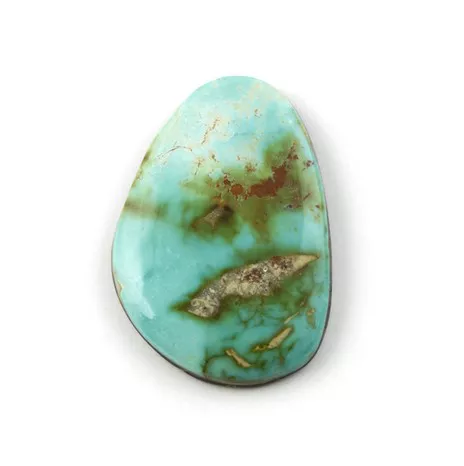Gemstones have been cherished throughout history for their beauty and metaphysical properties. One such gemstone is turquoise—a captivating stone known for its vibrant blue and green hues. However, it’s important to note that not all gemstones suit everyone. In this article, we will explore the factors and considerations that determine who should avoid wearing turquoise stone.
Skin Tone and Undertones:
One of the primary factors to consider when deciding whether to wear turquoise stone is your skin tone. While turquoise is generally considered a versatile stone, certain skin tones may clash with its vibrant color. Individuals with warm undertones, characterized by yellow, peach, or golden hues in their complexion, tend to be better suited for warmer gemstones like amber or coral. Conversely, those with cool undertones, featuring pink or blueish hues, often complement turquoise exceptionally well.
Personal Preferences and Style:
An individual’s personal style also plays a significant role in determining whether wearing turquoise is suitable for them. Some individuals prefer minimalistic or monochromatic styles, where the vibrancy of turquoise might appear overpowering. On the other hand, those with eclectic or bohemian sensibilities may find turquoise to be an excellent addition to their wardrobe. Ultimately, your personal style should guide your decision about wearing turquoise.
Allergies and Sensitivities:
While gemstones are generally safe to wear, some individuals may develop allergies or sensitivities to specific stones. Turquoise is a relatively soft gemstone and can be porous, making it more prone to absorbing substances that could cause irritation. If you have a known sensitivity to copper or minerals found in turquoise, it is advisable to avoid wearing this stone to prevent potential allergic reactions. It’s always recommended to consult with a dermatologist or gemologist before wearing any gemstone if you have a history of gem-related allergies or sensitivities.
Cultural Considerations:
Cultural beliefs and traditions also influence gemstone preferences. In some cultures, turquoise is considered sacred and is believed to possess healing properties. However, in certain communities, wearing turquoise may be culturally inappropriate or signify bad luck. It’s important to be mindful and respect cultural norms when considering the suitability of turquoise for personal adornment.
Personal Energy Alignment:
Many individuals believe that gemstones possess metaphysical energies that can affect their well-being. Turquoise is associated with qualities such as balance, protection, and communication. However, each person’s energetic alignment is unique, and certain individuals may find that turquoise does not resonate well with their energy field. If you feel uncomfortable or unbalanced when wearing turquoise, it might be an indication that this stone is not the right fit for you.
Astrological Considerations:
Astrology plays a significant role in gemstone selection for many people. Different zodiac signs are associated with specific gemstones believed to amplify their positive attributes or counterbalance negative influences. For example, individuals born under the sign of Scorpio might find greater benefits from wearing stones like topaz or opal rather than turquoise. Consulting an astrologer can provide valuable insights into gemstone recommendations based on your astrological profile.
Conclusion:
While turquoise is undoubtedly an enchanting gemstone, it may not suit everyone due to various factors such as skin tone, personal style, allergies, cultural beliefs, personal energy alignment, and astrological considerations. It’s crucial to consider these factors before incorporating turquoise into your jewelry collection. Remember, gemstone selection should ultimately be a personal choice that reflects your individuality and resonates with your essence. By exploring your preferences and seeking guidance from experts, you can make an informed decision about whether wearing turquoise stone aligns with your unique characteristics and desires.


